The most valuable asset of a country is its people. Every man and his soul that God created to be eternal, and the spirit of life he breathed into them, are priceless.
The value of the human life, even more, was given from the Lord Himself. Sent by the Father, he was incarnated in His Son, Jesus Christ, and he died on the Cross “for us to live.” And he sent the Holy Spirit, the Lord, to be with us until the end of the ages.
Our Lord, the Holy Trinity, was revealed to the people. He first loved us. We saw the righteousness of God, and he showed us how to live. And how did he do it? By example, and by words, and support in the Holy Spirit. For our Lord Jesus Christ showed us and said: “I am the Way, the Truth and the Life.”
Our life is in Christ. This is it’s only sense – “Truly, truly I say: who believes in me has an eternal life” (John 6, 47).
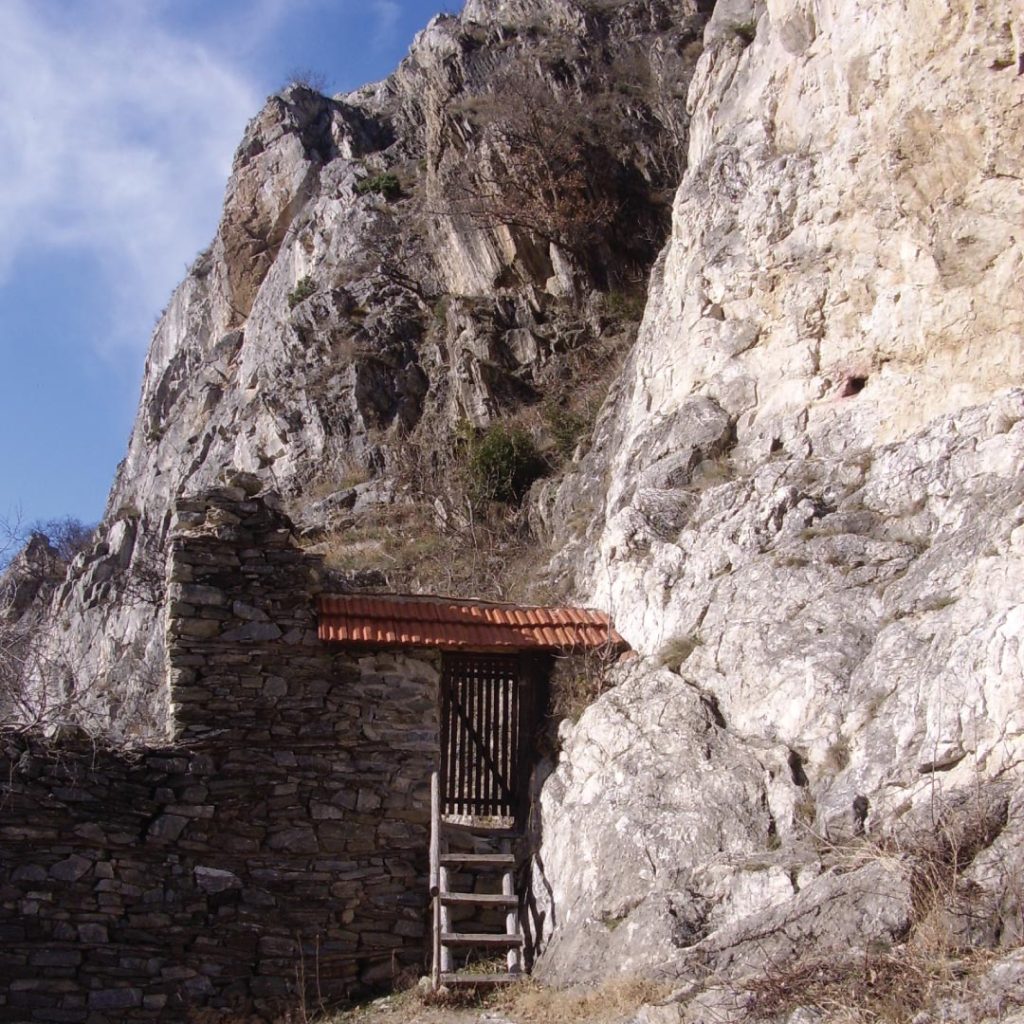
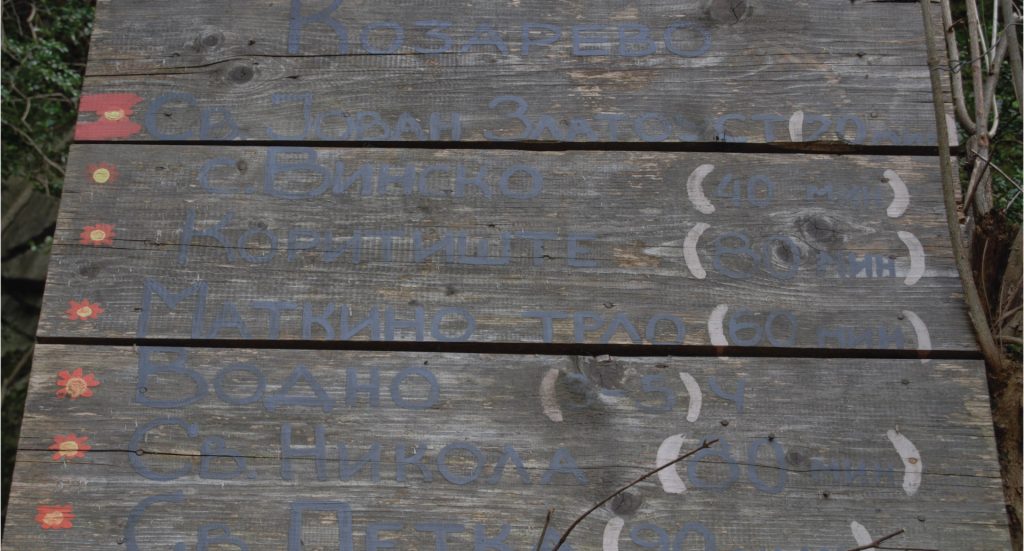
The monasticism
The real wealth of Matka are its inhabitants – monks, hermits, and unknown prayermen who pray for us before God.
It is a small, but sacred mountain.
Unfortunately, living in hesychasm, away from the eyes of the world, closer to God, these residents of Matka left no information about their life in Christ.
The cave churches, the remnants of the hermit cells, and the monasteries, all bear silent witness to their lives in Matka. Only some monks whose names appear in the commemorations, and abbots, who signed receipts, unintentionally left evidence of themselves. Of all the hermits, from the whole sequence of hermit cells between the church of St. Andrew to St Nedela, only the name of Father Gelasij is known, written under a photograph from his cell. Moreover, of all these people, these monks of Matka, only one grave is known, that of monk Seraphim. He died either during, or soon after, the Second World War, brought down by a contagious disease that kept his resting place untouched.
Their names are important to God. Their life is the life of the early Christians and the monks throughout the centuries until today. About this life, Christ Himself taught, and it was preached by the first apostles, who taught about the hesychastic tradition. This Tradition stays unchanged. Each of the holy Fathers, wrote about it according to their style of expression, but all of them lived this way.
By writing about it, we write about the life of the monks of Matka. By writing about it, we only publish what the Holy Fathers wrote and the holy Councils have confirmed – this is a true confession of faith.
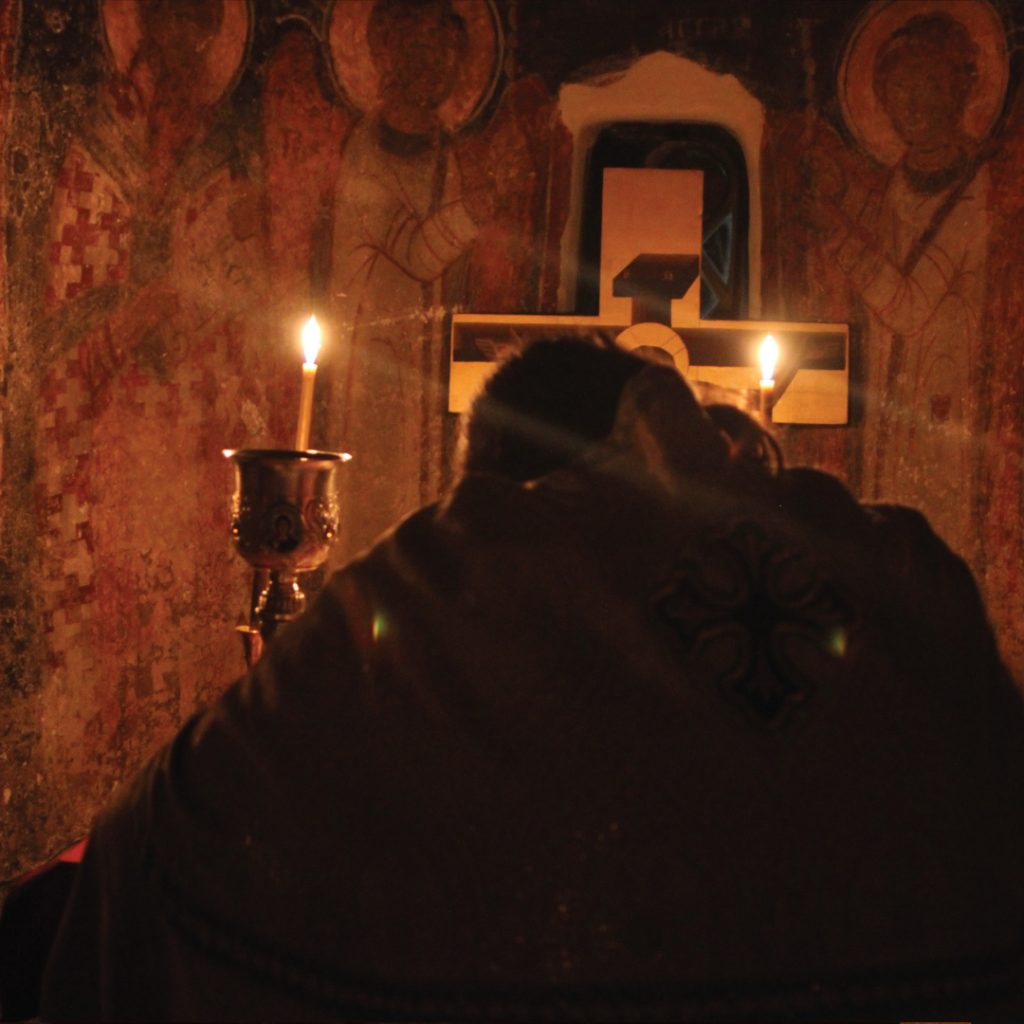
The hesychastic tradition
The monastic, ascetic-hesychastic, theological Tradition (Teaching) through the centuries has dealt with various theological challenges, but its thorough inspiration and its ultimate goal remained the same. Man, created in the image of God, as a person, as a Theocentric and Christological being, normally and naturally can live, primarily, in a free and loving communion with God and the God-man Jesus Christ. The God-man Christ, according to the Scripture and the holy Fathers, is the alpha and omega, He is the beginning, middle and end, or the purpose of man. Christ, as the reason and purpose, is the essence of human life, a route to the human salvation and its real achievement.
This godfocus does not alienate man from himself and from the environment, and does not deny the man his independence, or his achievement as a person. On the contrary, only the God-man Christ and the communion with Him in the grace of the Holy Spirit, makes man, man. Only the gracious community with Christ provides a true relationship of man with God, with himself, with his neighbors, and all creation. This is a description of man’s natural life.
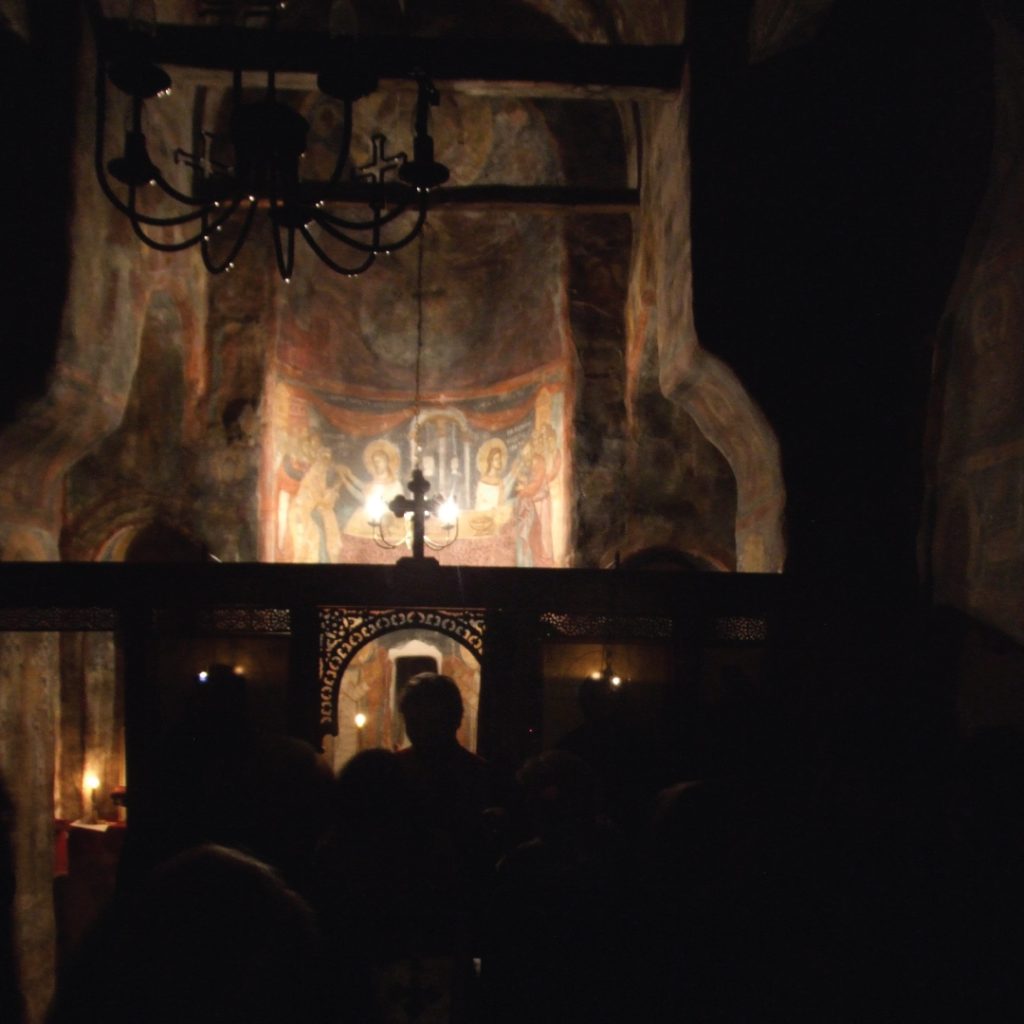
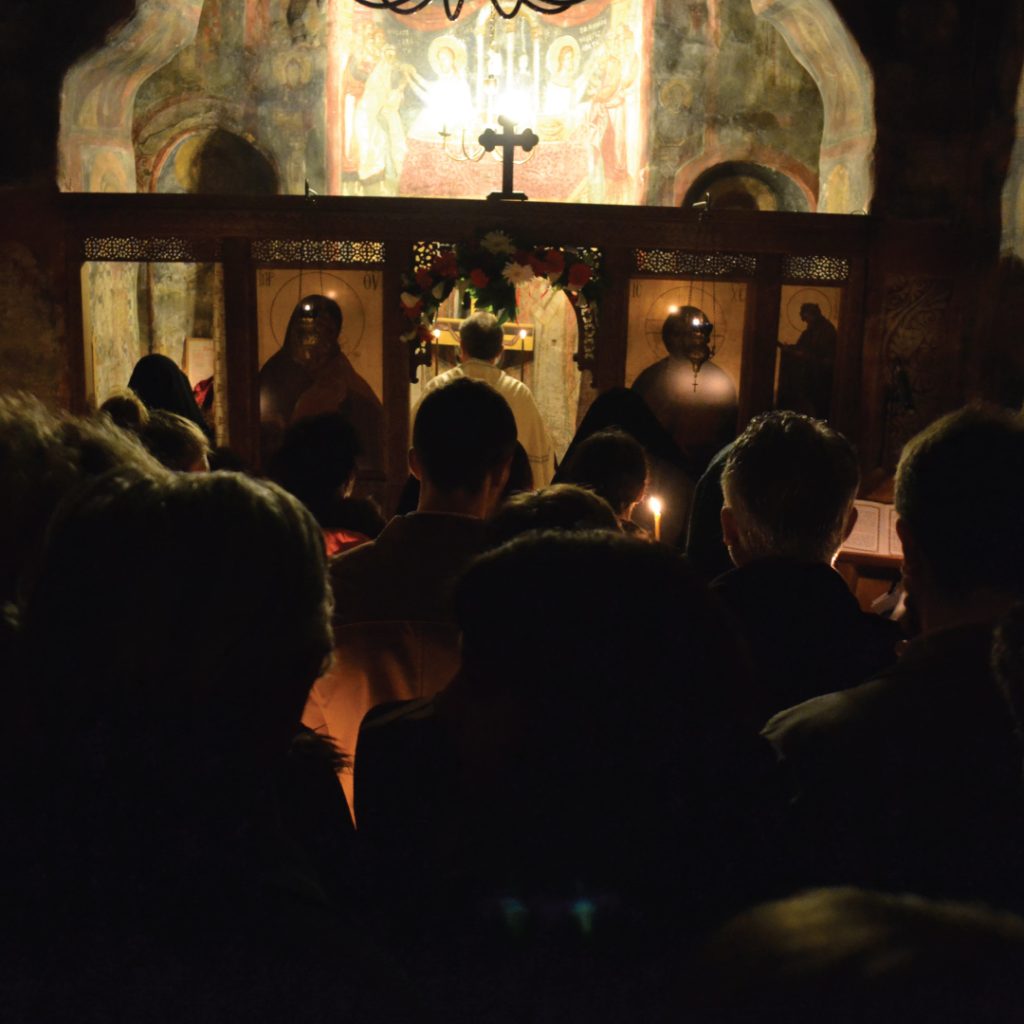
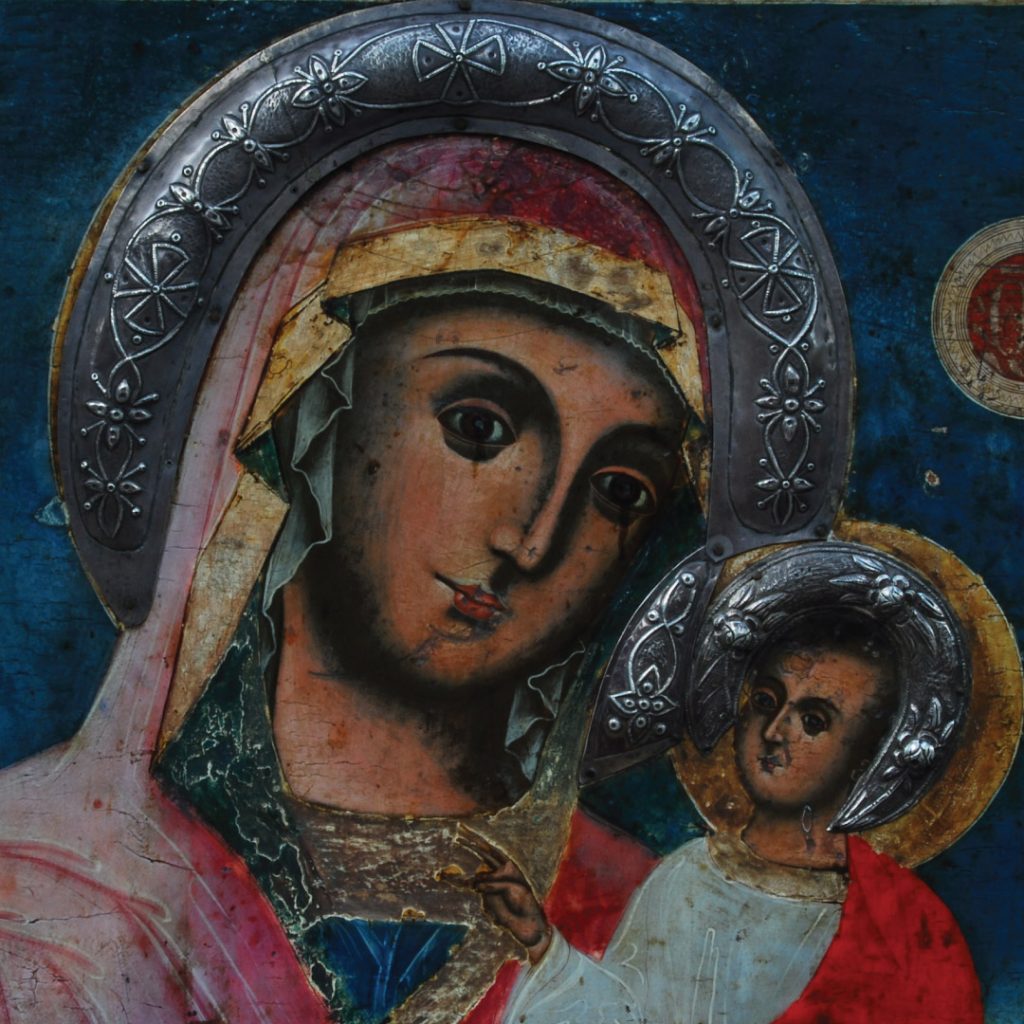
Free and loving people
The whole tradition (teaching) of the Church and the Lord Himself, with the God-man Jesus Christ as a Head, and the Church as His Body (as a graceful union of all the saints in the Holy Spirit); the Holy Sacraments, and above all, the Holy Eucharist as a holy all-mystery, also, the holy virtues of the Church; the Holy Scriptures of the New Testament as a book of the church community; the holy Ecumenical councils; the sacred Canons and the works of the Holy Fathers; the sacred temples, as well as the frescoes and icons they contain ets – all of that means the Incarnation of the Son of God, and the consequences of that Incarnation, and it is given to us only with, and only for, one single reason: to spiritually and gracefully grow in the God-man Christ, to develop our personal relationship and personal community with Him, and to transform in free and loving people, reaching the height and age of the growth of Christ, while working to fulfill an ontological community among us in the image and likeness of the Holy Trinity – the Father, the Son and the Holy Spirit – “As Thou, Father, in Me and I in thee, so they can be one in Us “(John 17, 21).
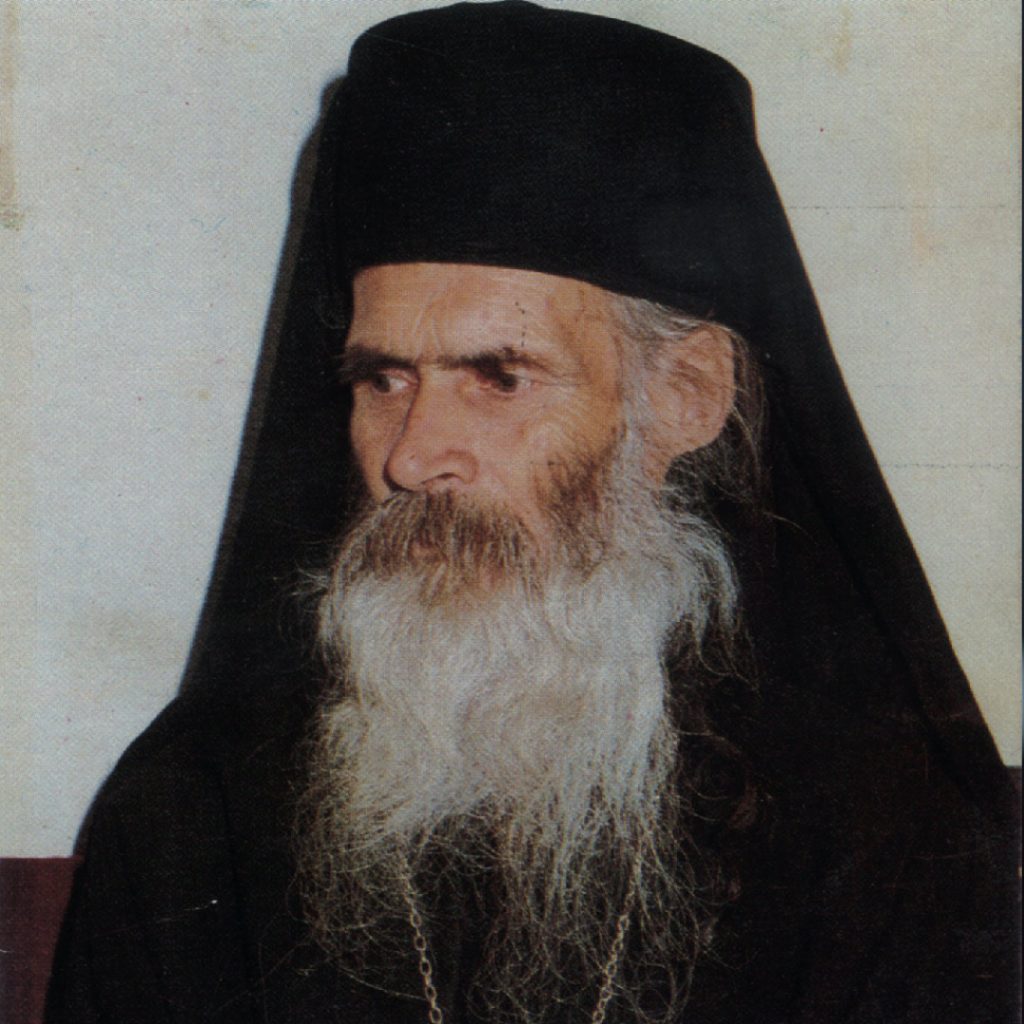
The living heart of the Orthodox Church
This specific way of life and struggle, this science and art of spiritual living, the aim of which is the human healing and perfection as a person, or deification, has been most faithfully perserved and passed on (both the theoretical and the practical) through history, in the Orthodox Church, primarily (almost exclusively) in her monasteries and monastic communities.
And, this religious teaching is transmitted personally, from person to person, from teacher to student, from spiritual father to spiritual child. Elder Sophronius says: “The spiritual fatherhood, as a gift of the Holy Spirit is a living heart of the Orthodox Church. It is a golden chain of the Tradition, which reminds us that Christianity is not religion from a book, but revelation of the mystery of the personality.”
The Holy Fathers, monks, often emphasize the fact that the entire spiritual life of man takes place in perfect order and harmony. For them, the spiritual life is not something accidental, or chaotic; something that might happen either way, for in the spiritual life exists one recognizable, and perfect order, which can’t be even slightly overlooked.
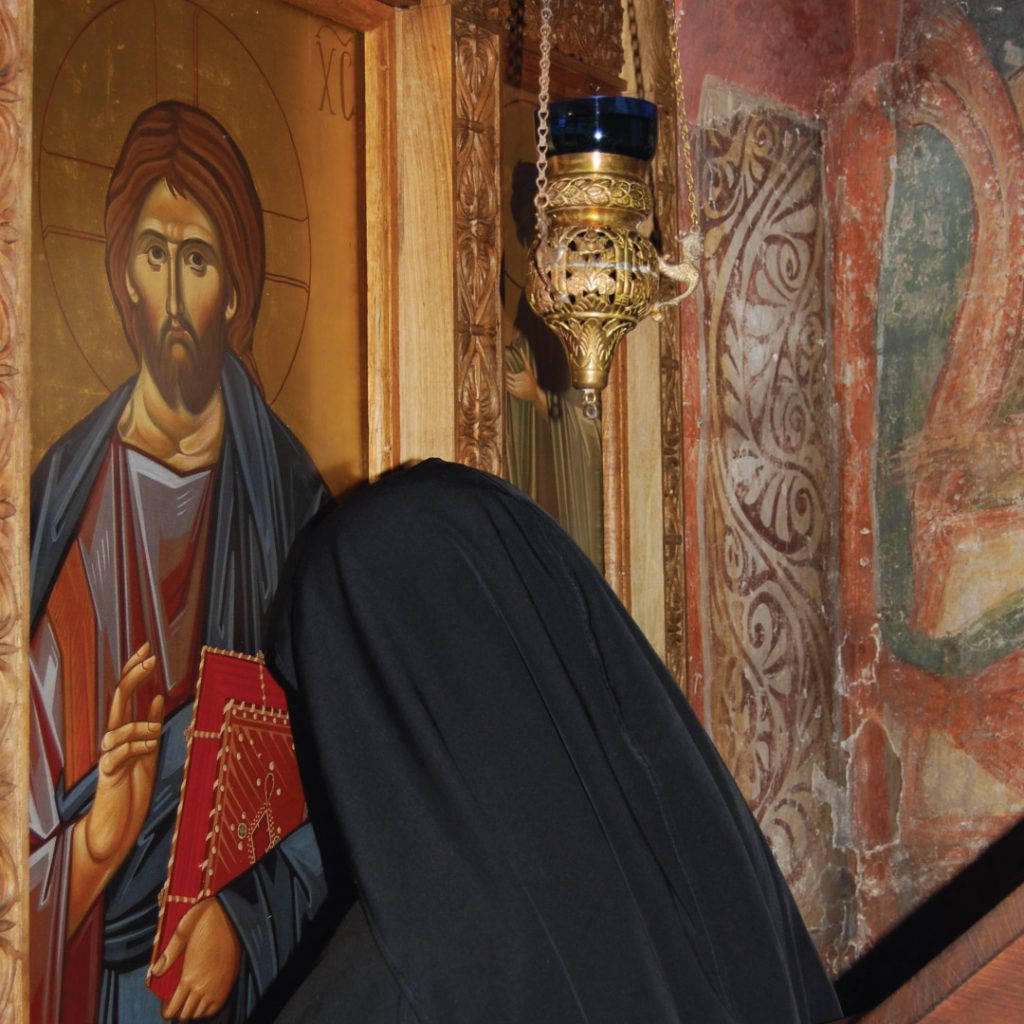
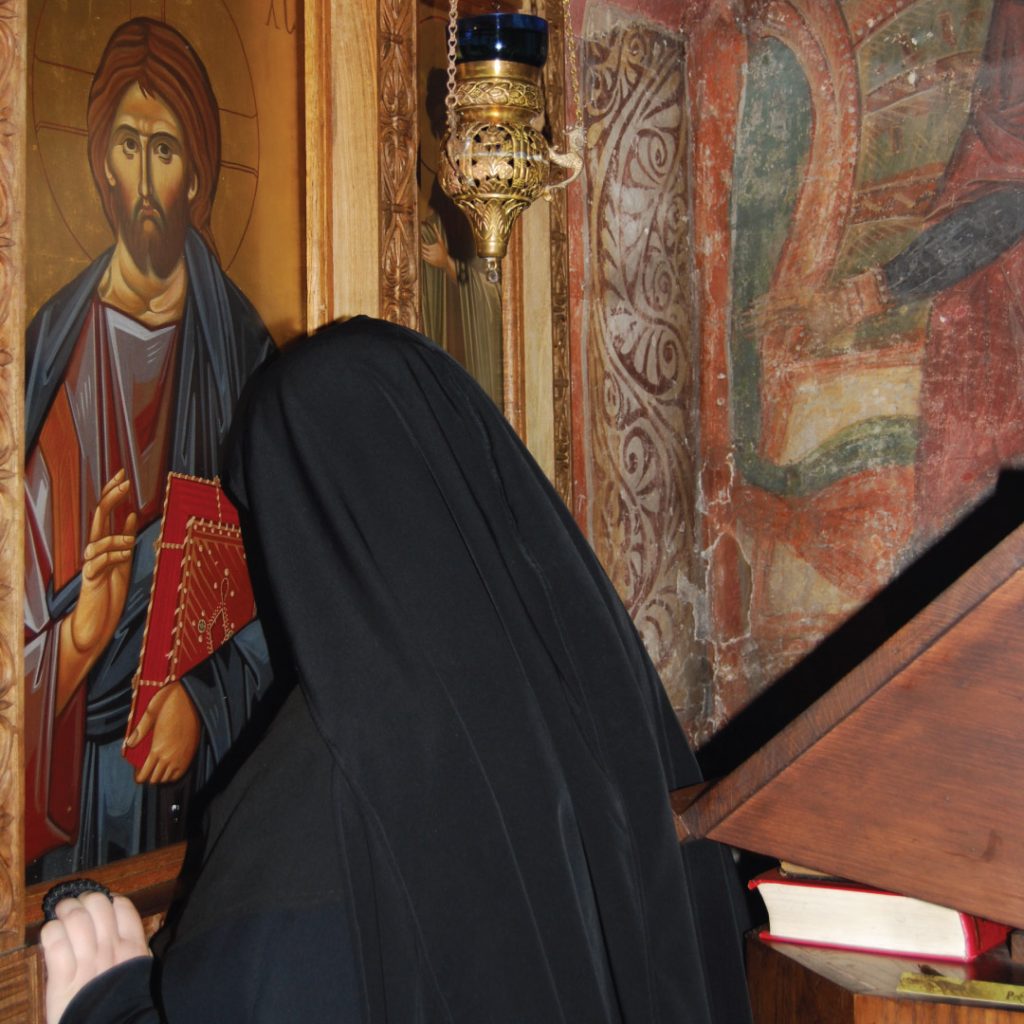
Three levels (stages) in the spiritual development of a person
According to the Holy Fathers, there are three levels (stages) in the spiritual development of a person, which they name as, a purification of the heart from passions, the enlightenment of the mind, and the deification of the human person. Each stage of the spiritual development corresponds to a method of prayer: the first stage, verbal or mental prayer, the second stage, noetic prayer, and the third stage, the unceasing noetic prayer. At each of the stages appears appropriate grace, which they call: purification, illumination, and deification.
Consequently, each of these three stages take place in a specific, but different for each level, spiritual relationship of the spiritual child to the spiritual father. This relationship is dynamic: moving from one quality to another, changing and transforming. The relationship between the spiritual father and his spiritual child is one of the key elements in the spirituality of the Orthodox Tradition.
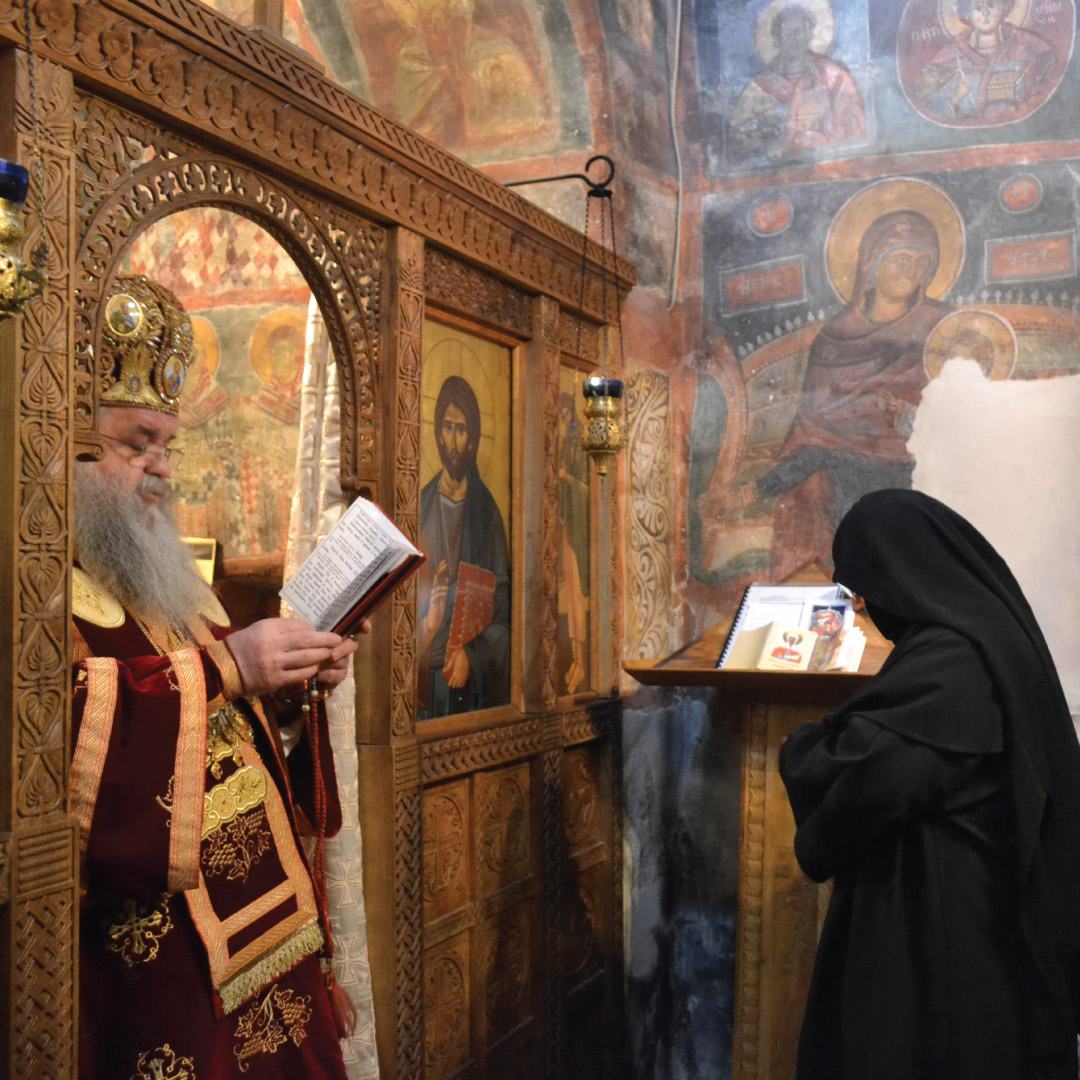
The obedience
According to the Mount Athos monastic tradition, the relationship with the spiritual father, monk, should be wholehearted, in absolute obedience, particularly at the beginning when the spiritual child is at the first level; the degree of purification. The main illness of man lies in his mind, or more precisely, in his vanity, pride, and high opinion of himself. This is why, an essential requirement that is set to the one who comes to the monastery, is the practice of humility: to freely and willingly put their mind in obedience to another. To subdue their mind under the mind of their spiritual father.
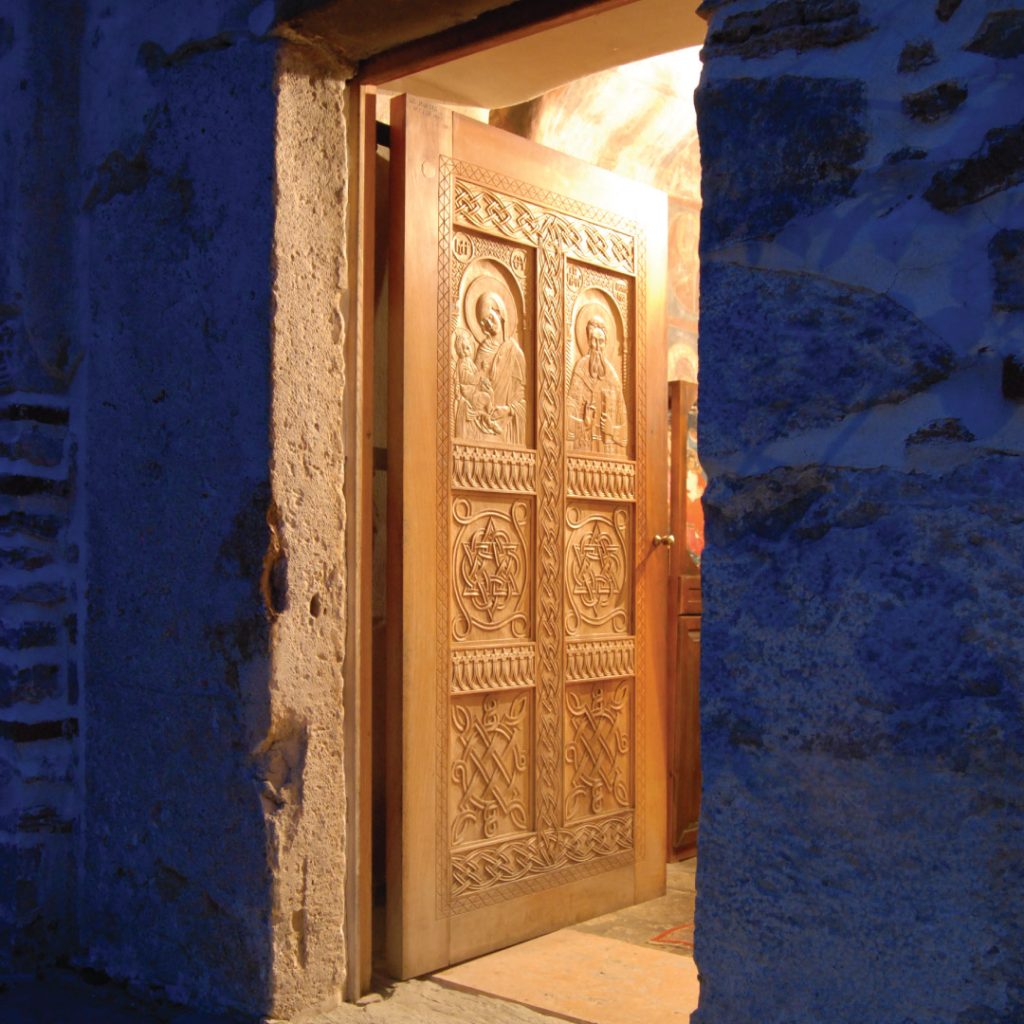
The prayer
The prayer, as a sacred virtue, especially the noetic prayer, has a special place in the building of the personal relationship with God, so that without it, this relationship could not be imagined. The prayer, in the simplest terms, is a dialogue that leads man into communion and unity with God.
God gave us the commandment to love God with all our heart, with our mind, with our soul. Is it possible to love Him without a prayer? The one who you love, you think about him, you talk about him, you want to be with him.
The teaching of the Jesus prayer only can be personally experienced, perceived and checked.
The more man strives to be with God through such prayer struggle, the more God bestows this prayer dialogue onto him, so it becomes better, and more permanent. We know of several levels of quality in prayer and they are accurately recorded and passed on by the Fathers. What God ultimately gives the ascetic as a prayer – a very rare gift – is the unceasing noetic prayer, which despite the fact the ascetic is speaking, reading, thinking, eating, working, or sleeping, the prayer in his heart flows constantly.
Each ascetic, in his personal transformation in the Church, through the noetic prayer, experiences it in an assembly, as a struggle with all the saints and as the beginning of the transformation of the other people and the whole world. Every monk who says the Jesus prayer knows that it is prayer for the salvation of all people. Only in this spirit, can God receive this prayer.
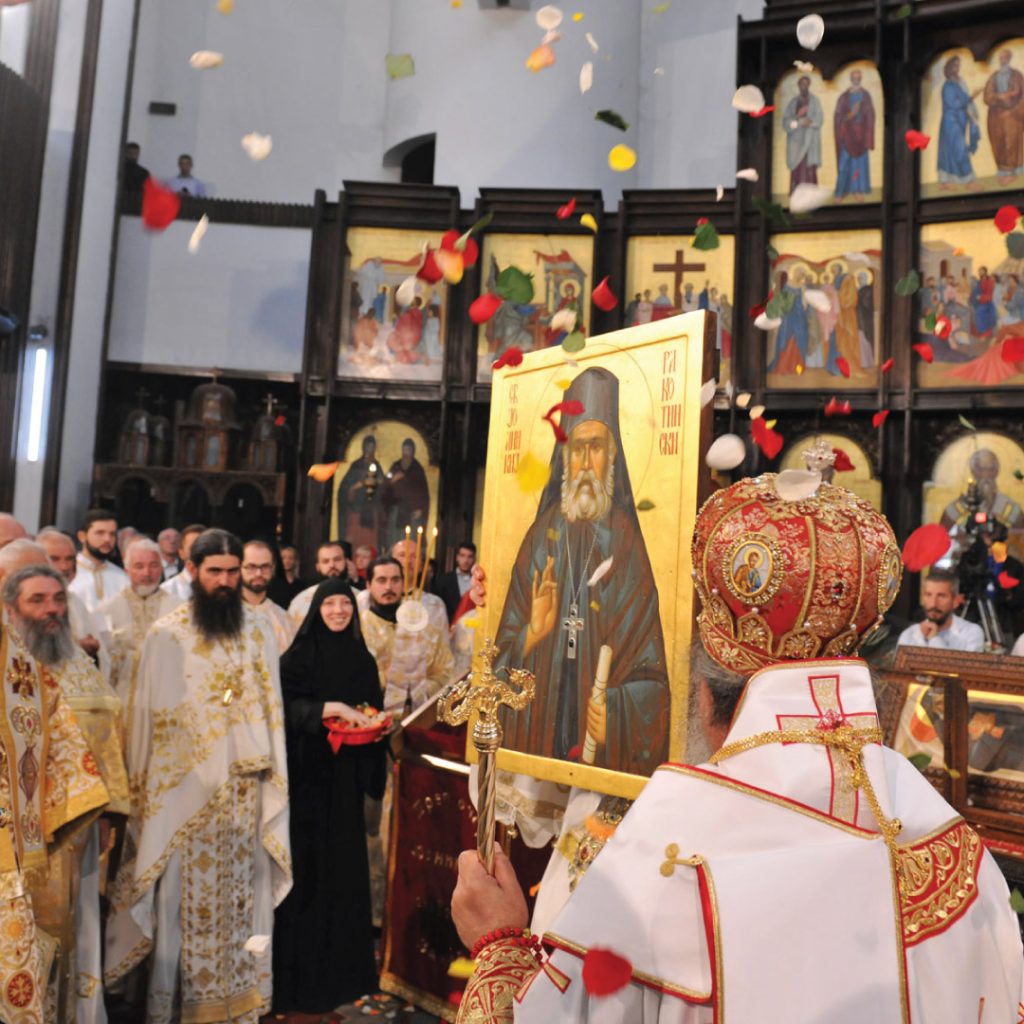
This lights
The reconstruction and revival of the monastic life today is, as always, based on the renewed practice of the eucharistic and hesychastic life in the parishes, and the monasteries (it is the fruit of repentance of the people).
The Tradition about the Jesus prayer in Macedonia and in Matka is an inseparable part, never ceasing, from the apostolic times until today. And although we know that the flame of the Jesus Prayer constantly burned in the hearts of the prayerful hesychasts, in the heart of the living Tradition of the Holy Fathers, in certain moments it was intensely burning.
We will follow exactly the continuity of the ascetical-hesychastic Tradition in Matka and in Macedonia, through these figures, these lights, that were willing to deny themselves and, sacrifice themselves for God and their fellow men. They testified and preached about Christ in this territory, they were burning in order to glow even today.
Again, do not forget, every gift we receive through Her, especially the gift of the mind-hearted prayer (the unceasing Jesus prayer in the heart). Her wonderful Name with love fills our hearts – Mother of God and Ever-Virgin Mary.
